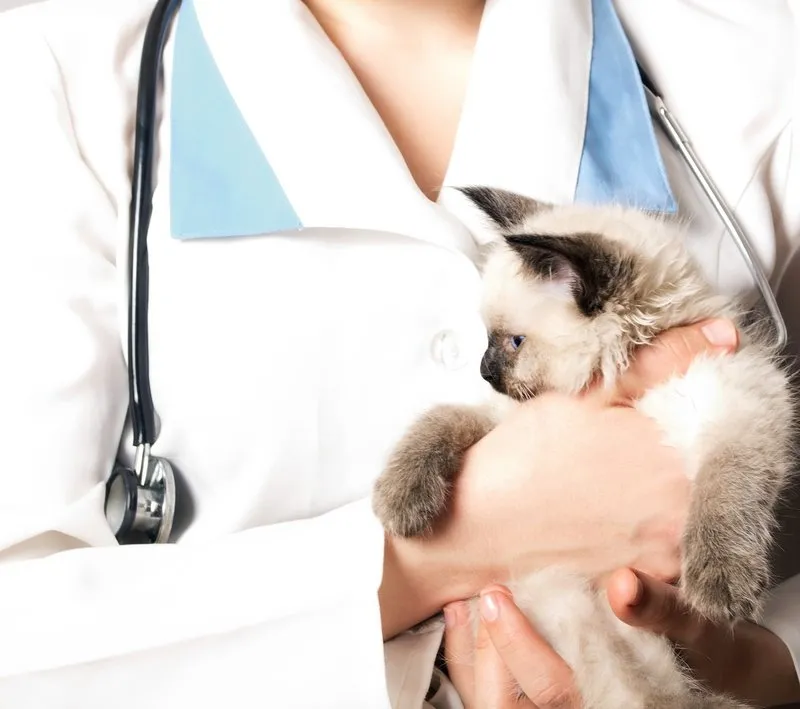Have you ever wondered what the differences are between donkeys and mules? In some aspects, the two are very similar, but not in others. A Rapid City, SD veterinarian discusses mules below.
What’s The Difference Between A Mule And A Donkey?
The Equus family includes donkeys, horses, zebras, kiang, onagers, and asses. Mules are a hybrid between horses and donkeys. They have a donkey as the father and a horse as the dam. Many mule supporters feel that these lovable equines mix the best aspects of both species. Mules are strong and patient, similar to donkeys, yet they are also agile, like horses. They have traditionally been employed as working animals, but are becoming increasingly popular among equestrians due to their hardiness and speed. They even currently compete in dressage!
Mules, as hybrids, are infertile and incapable of producing their own offspring. Mules are not the only equine hybrid. There’s also the hinny, which is a horse/donkey cross with a horse as sire and a donkey for dam. The zorse is the offspring of a male zebra and a female horse, whereas the zonkey is a male zebra crossed with a female donkey. We also have zedonks, which are a mix between a male donkey and a female zebra.
In case you were wondering, Eeyore from Winnie the Pooh was a donkey, not a mule.
Why Can’t Mules Reproduce?
This is due to variations in chromosomes between horses and donkeys. Horses have 64 chromosomes, whereas donkeys have 62. Mules end up with 63. That odd number interferes with cell division, rendering the animal sterile.
What Was Mules Used For Historically?
Mules have traditionally served as beasts of burden. They’ve been employed as pack animals for thousands of years. In fact, the ancient Romans and Egyptians used them! American settlers utilized them to transport supplies and mine coal. By the twentieth century, cars had taken over much of the job that had previously been done by mules in the Western world. Nonetheless, they continue to be employed as working animals in many regions.
What Is The Primary Physical Difference Between Horses And Mules?
The mule’s most distinguishing characteristic is arguably its long ears, which they inherited from their donkey sires. They also tend to have larger heads and narrower hooves than horses. These are the items that are most obvious to the naked eye. There are more differences, which we will discuss shortly.
Mule Basics
Mules can vary greatly in size and color, as these characteristics are largely determined by the father. A mule with a draft horse dam may be significantly larger than one whose mother was a pony. They can wear any color or pattern that you might see on horses or donkeys. However, the majority have brownish-grey coats. They have coarser fur than horses.
Are Mules Truly Stubborn?
You’ve probably heard the adage about being stubborn as a mule. There is some truth to that: these guys have a reputation for being rather assertive. Why is that? It could be indicative of intellect. Though additional research is needed, studies suggest that mules are smarter than the normal equine. That could explain why individuals sometimes refuse to accomplish tasks they don’t want to do. They also tend to learn quickly.
What Are Mule Personalities Like?
Mules are generally stoic, though they can be hot. We normally recommend castrating males because they will be calmer and easier to handle afterward. However, they may also be highly entertaining and affectionate.
What Health Concerns Do Mules Face?
Mules are relatively hardy, which is why they are frequently utilized as beasts of burden. They are, in general, stronger and less susceptible to health problems than horses. They also seldom inherit genetic disorders. However, they are susceptible to several problems, including lesions, limb deformities, and ectoparasites. They may also develop many of the same diseases as older horses, such as dental difficulties, arthritis, and PPID (Pituitary Pars Intermedia Dysfunction). Mules are also prone to conformation difficulties.
Potential owners should be advised that mules are notoriously stoic, making it difficult to identify signs of disease. If you are thinking of getting a mule, you should bear this in mind.
How Do You Care For A Mule?
For the most part, mules require similar care to horses. This includes clean, comfortable stables, fresh water, a healthy diet, and frequent veterinarian treatment. There are a few significant changes, however.
- Turnout time is always necessary for horses, but it is especially important for mules. They do not like being pent up!
- Mule teeth are slightly different from horse teeth. Make sure your mule’s choppers are examined regularly and floated as needed. You’ll also want to pay closer attention to this as your hooved companion ages.
- Mules are highly susceptible to lungworms and other worms. Keep up the deworming.
- Mules do not metabolize medicine like horses do. They will respond differently to anesthetics and painkillers. Always consult with your veterinarian before administering any medication.
- Mules frequently require blankets to keep them warm in cold weather.
Schedule An Appointment At our Rapid City, SD Veterinarian.
Are you looking for an excellent equine vet? Please do not hesitate to contact us. As your Rapid City, SD animal hospital, we are here to assist!




!Social Media Icons